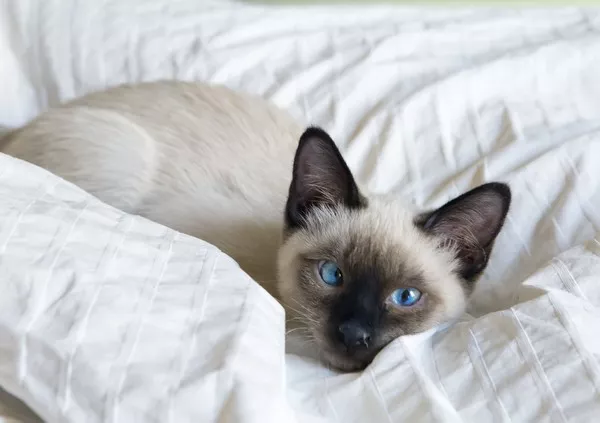Selecting the appropriate litter box size for your cat is a crucial aspect of ensuring their comfort and overall well-being. Cats have specific needs and preferences when it comes to their litter boxes, and getting the size right can make a significant difference in their litter box habits. In this article, we will delve into the factors to consider when determining the ideal litter box size for your cat, helping you make an informed decision that benefits both you and your feline companion.
Understanding Your Cat’s Needs
Before you begin shopping for a new litter box, it’s essential to understand your cat’s needs and natural behaviors. Here are some key considerations:
1. Size and Breed:
The size of your cat and their breed can influence the size of the litter box they require. Larger cats typically need larger litter boxes to move comfortably, while smaller breeds may be content with a more compact option.
2. Age and Mobility:
Kittens and senior cats may have different requirements. Kittens may need low-entry, shallow litter boxes for easy access, while older cats may benefit from litter boxes with lower sides to accommodate any mobility issues.
3. Litter Box Habits:
Observe your cat’s litter box habits. Do they tend to dig vigorously or aim outside the box? Understanding their behavior can help you choose a litter box that accommodates their preferences.
4. Multi-Cat Household:
If you have multiple cats, you’ll need larger litter boxes to ensure each cat has enough space. Cats are territorial animals, and having separate boxes can prevent territorial disputes.
5. Covered vs. Open Litter Boxes:
Consider whether your cat prefers a covered or open litter box. Some cats appreciate the privacy and reduced litter scatter provided by covered boxes, while others may feel confined.
Choosing the Right Dimensions
Now that you’ve considered your cat’s needs and preferences, it’s time to focus on the specific dimensions of the litter box. Here are some guidelines to help you choose the right size:
1. Length and Width:
The ideal length and width of the litter box should allow your cat to turn around comfortably and assume their preferred digging posture. A good rule of thumb is to select a box that is at least 1.5 times the length of your cat, from the tip of their nose to the base of their tail.
2. Depth:
The depth of the litter box is also crucial. Cats typically dig a few inches into the litter to bury their waste. Aim for a litter box that is about 1.5 to 2 times the height of your cat when they are standing on all fours.
3. Low Entry vs. High Sides:
Consider the height of the litter box sides, especially if you have a kitten, elderly cat, or a cat with mobility issues. Lower sides make it easier for these cats to enter and exit the box. However, some cats may prefer higher sides to prevent litter from being kicked out.
4. Multiple Cats:
In a multi-cat household, it’s essential to provide each cat with its own litter box. Ensure that each box meets the size requirements mentioned above, and place them in separate locations to prevent territorial disputes.
Types of Litter Boxes
Now that you have a better understanding of the dimensions your cat needs, let’s explore the different types of litter boxes available:
1. Standard Open Litter Box:
These are basic rectangular or square boxes with low sides. They are widely available and suitable for most cats. Choose the appropriate size based on your cat’s dimensions.
2. Covered Litter Box:
Covered litter boxes have a hood or lid that provides privacy for the cat and helps contain odors. However, some cats may feel confined in these boxes, so monitor your cat’s reaction.
3. Top-Entry Litter Box:
Top-entry litter boxes have a lid with an opening on top. They are excellent for preventing litter scatter and can be helpful in multi-cat households.
4. High-Sided Litter Box:
These boxes have higher sides to contain litter and prevent it from being kicked out. They can be particularly useful if your cat tends to dig vigorously.
5. Automatic or Self-Cleaning Litter Box:
Automatic litter boxes are equipped with sensors that detect when a cat has used the box. They then automatically scoop and dispose of the waste. These can be convenient but may require larger dimensions to accommodate the machinery.
Placement and Maintenance
Once you’ve chosen the right litter box size and type, proper placement and maintenance are essential for your cat’s comfort and hygiene:
1. Location:
Place the litter box in a quiet, low-traffic area of your home where your cat can have privacy. Avoid placing it near their food and water dishes.
2. Accessibility:
Ensure that the litter box is easily accessible for your cat. If you have a multi-story home, consider placing litter boxes on each level for convenience.
3. Cleaning:
Regularly scoop the litter box to remove waste and clumps. Empty and clean the entire box at least once a week, using a mild, unscented detergent. Avoid strong-smelling cleaning products, as they can deter your cat from using the box.
4. Litter Depth:
Maintain the proper depth of litter in the box, typically around 2 inches. Add more litter as needed to keep the depth consistent.
5. Monitoring:
Pay attention to your cat’s litter box habits. Changes in frequency, straining, or signs of discomfort may indicate underlying health issues that require a veterinarian’s attention.
Conclusion
Choosing the right litter box size for your cat is a critical aspect of their overall well-being and comfort. By considering your cat’s size, breed, age, and behavior, you can select a litter box that meets their specific needs. Providing the appropriate litter box dimensions and maintaining a clean and accessible environment will help ensure your cat’s litter box habits remain healthy and hassle-free, creating a happier living situation for both you and your beloved feline companion.



























